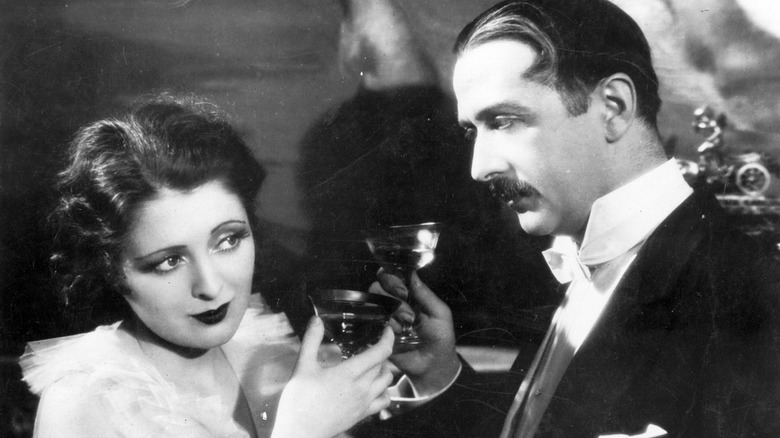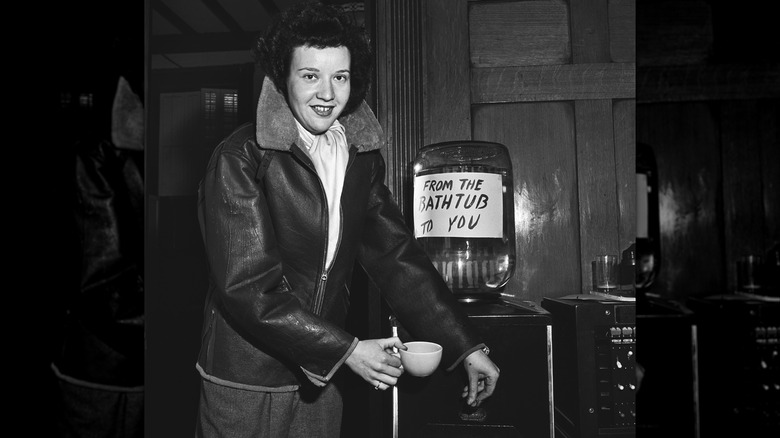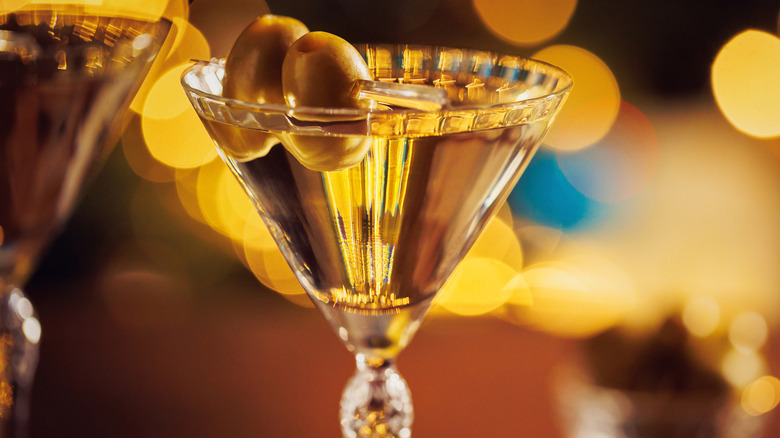Why This Alcohol Was So Popular During Prohibition
When you think of flappers and the Roaring Twenties, one of the drinks that pops into your head is probably gin. While this liquor had its own craze back in England centuries before, gin rose to massive popularity during Prohibition. It was found in most speakeasy cocktails, and even led to some places being nicknamed "gin joints." There's a reason gin had its heyday at this time, but the explanation might not be as glamorous or romantic as you think.
To put it simply, alcohol sold during prohibition was bad. Like ... really bad. Bootleggers had a rough time getting their hands on any sort of quality ingredients with the police always keeping a close eye on them. So, most batches of booze were concocted using subpar methods, or with raw industrial alcohol that wasn't designed for human consumption. Some of this alcohol contained toxic substances that could result in poisoning and even death, but that didn't stop dedicated drinkers.
One of the cheapest ways to emulate real alcohol was by making a faux gin using glycerin and juniper mixed into medical, wood tar, or home-brewed alcohol. It was overpowering in taste, it stank, and many struggled to drink it. Luckily, this gin happened to have a flavor that was easy to mask with other things, like fruit juice, herbs, or soda. So if you wanted a decent-tasting drink during the dry crusade — and you didn't want to gag — gin cocktails were your poison of choice.
The legend of bathtub gin
You might have heard the term "bathtub gin" before, and while it does originate from Prohibition, it's often misunderstood. Many believe that people mixed and brewed gin in actual bathtubs while trying to find ways around the 18th Amendment, which was enacted to restrict alcohol consumption in 1919. However, there's no evidence that bootleggers used bathtubs as makeshift stills or mixing vats.
Instead, the drink got its name because of its bottling methods, not brewing ones. Water was usually used to fill up bottles of gin halfway, to dilute the alcohol to the point where it was palatable. This also allowed bootleggers to make more of it with the ingredients they had, which helped put lots of gin on speakeasy shelves. Unfortunately, kitchen sinks of the era were not deep enough to allow the gin bottles to sit upright. So, many bootleggers would put their bottles in the bathtub when it came time to top them off.
Bathtub gin may have risen to its mythical status because the stuff was such a potent rotgut that most people readily believed it could have been brewed in someone's bathroom. Given its popularity in a time when drinking liquor without a medical prescription could net you a fine or even prison time, it's no shock that this urban legend endured. But as Leon W. Kania writes in the "The Alaskan Bootlegger's Bible," "There are wicked, illicit things you can do in a bathtub, but making gin is not one of them."
We've come a long way since Prohibition
A far cry from the hooch sold illegally during the 1920s, gin is now a well-regarded and widely enjoyed drink. Celebrities have their own brands, and Snoop Dogg has made "Gin and Juice" a household name. Some high-end gin cocktails cost up to $5,000, making modern gin a completely different creature than it was 100 years ago. And, for the most part, present-day gin is a lot less nauseating and dangerous to consume.
More than just gin drinks, the 18th Amendment and the nearly unbearable alcohol it birthed gave the world cocktails of all kinds, many of which are still available today. Without bootleg booze that needed to be watered down, we wouldn't have Sidecars, Bee's Knees, or many popular rum drinks. Now, from dry martinis to sloe gin cocktails and the world classic gin and tonic cocktail, the selection of mixed drinks is vast and delicious, all thanks to Prohibition.


